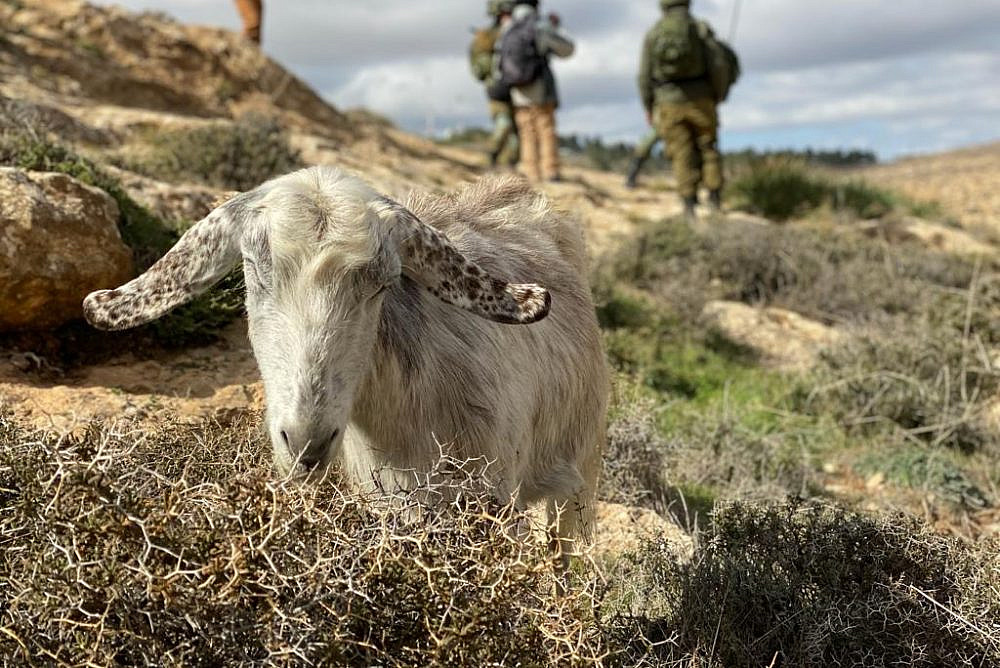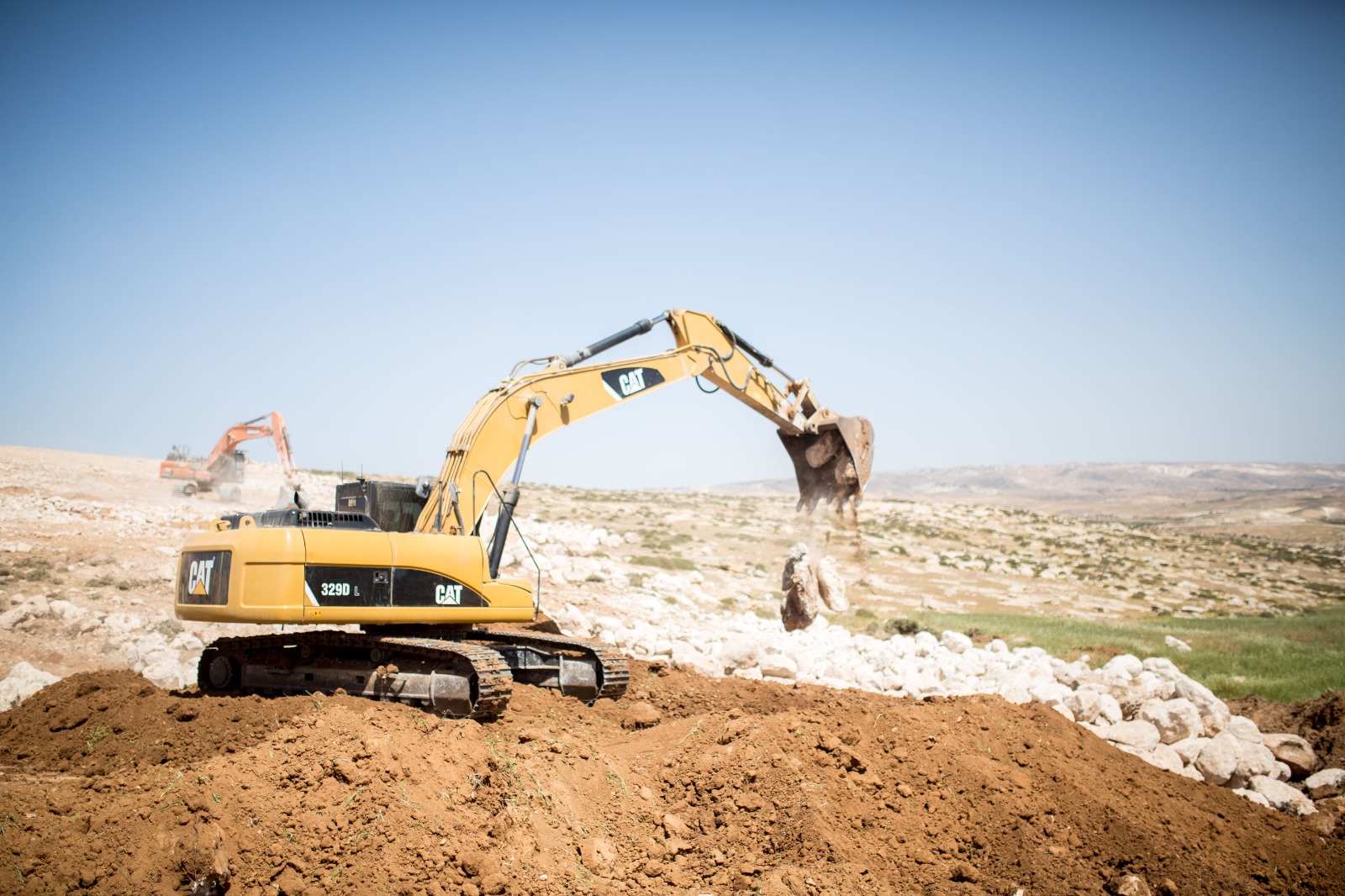Driving through the South Hebron Hills in the occupied West Bank on Monday morning, the yellowed landscape was starkly dryer than just a few days ago. The rains have completed their yearly visit, the communities are adjusting to a hot and dry Ramadan, and the herds of sheep and goats are making their final day-long tours with their shepherds through the hills.
The livelihoods of Palestinian shepherds across the West Bank is dependent upon their herds, and this past month was the prime season for the animals to feed on the rich, spring-time land. Yet as my car climbed the hill toward a-Tuwani Village, I saw Israeli bulldozers, again, carving into the hills of Ein al-Beida, opposite the Israeli settlement of Ma’on. With each crack of the rock and load of soil, the land was being reshaped into a platform for development.
In the past month alone, at least three new major Israeli settlement projects have sprouted up in the South Hebron Hills, including new outposts near the villages of Zanuta and Sarura, and now the development project in Ein al-Beida. But the project in Ein al-Beida is not simply another case of land takeover through discriminatory policies of occupation: it is feeding into an ongoing environmental crisis.
The UN Intergovernmental Panel on Climate Change (IPCC) highlighted in its 2007 assessment report that the warming rates for the southern and eastern Mediterranean will be higher than global mean rate. According to the report, we will experience a mean warming of 2.2 to 5.1 degrees Celsius and an average decreased precipitation of at least 20 percent by 2050. The IPCC also flagged the region as a climate change hotspot which will face the strongest warming of hot extremes and significant increases in extreme droughts.
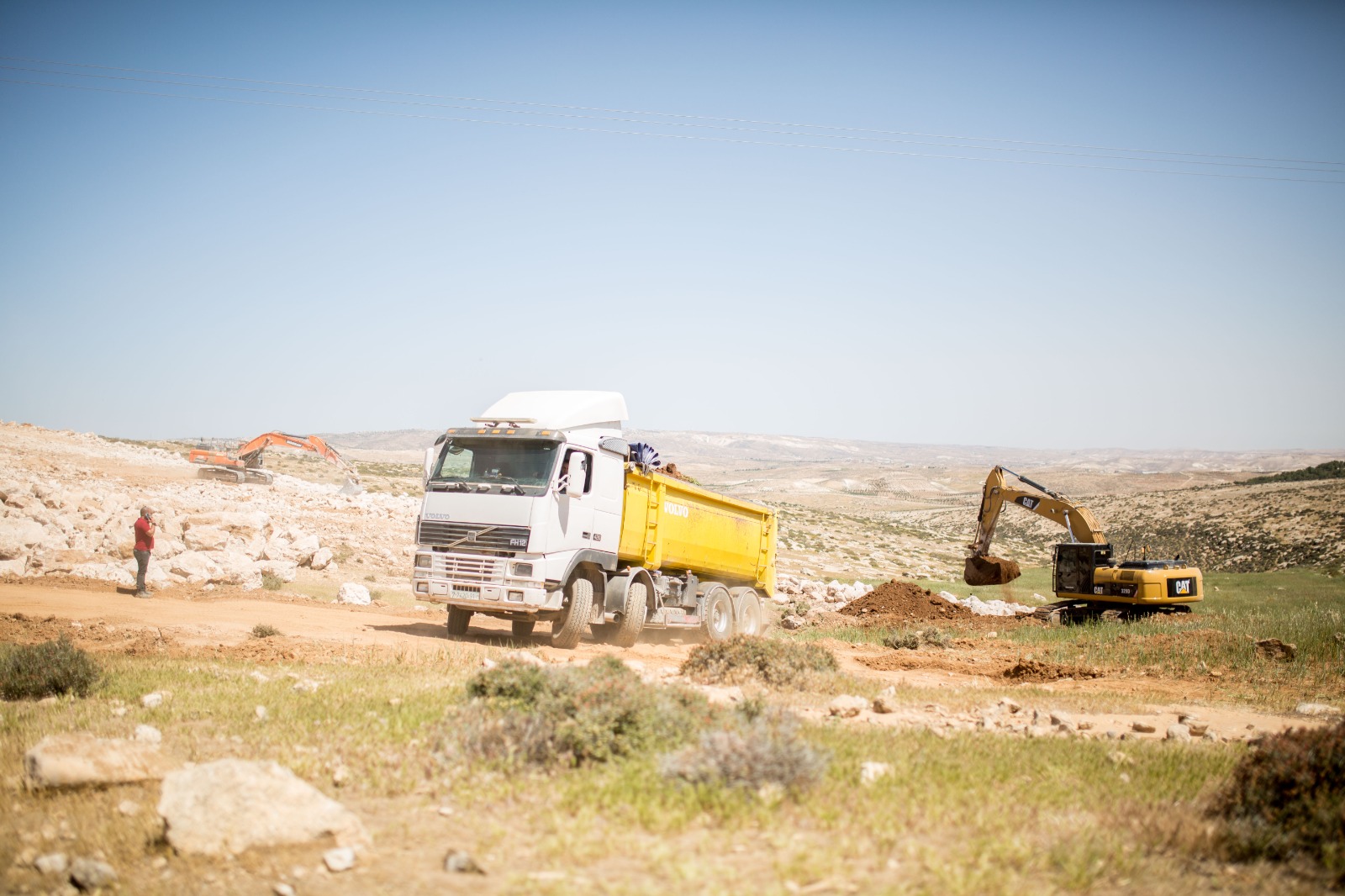
These changes will be felt in the occupied territories, too. However, much uncertainty still exists regarding the precise impact of climate change in the West Bank, partly due to the limited availability and politicization of data. Palestinian experts and authorities in particular have critical challenges in collecting and analyzing data: because of Israeli restrictions on Palestinian movement in the West Bank, access to critical monitoring areas is limited. Meanwhile, Israeli authorities rarely publish sufficient data on shared water resources, which are critical for basic, best-practice climate and resource modeling.
Nonetheless, experts reasonably predict that changing precipitation patterns and warming will significantly impact water resources and land cover, affecting agricultural and livestock sectors. In fact, the United Nations Development Programme has identified the South Hebron Hills as one the two most climate-vulnerable areas in the West Bank, along with the Jordan Valley. For Palestinian shepherds, this means that grazing land will continue to shrink in size and deteriorate in quality.
‘The settler told me if I came back to my land, he would shoot me’
But this year, as with the previous years, Palestinian shepherds in the West Bank are far more consumed with harassment and violence from Israeli soldiers and settlers than they are with their changing pastures. In 2020, the number of demolitions in the territory — which includes homes, animal shelters, and other infrastructure — was the second highest since the UN Office for the Coordination of Humanitarian Affairs (OCHA) began documenting the practice in 2009.

In March, armed settlers from Nof Nesher fired gunshots above school children from the village of Emneizal who were shepherding in a nearby area. Last week, Israeli herders grazed on private Palestinian land in Shuweika, forcing the Palestinian shepherds off their own land.
Earlier this year, settlers threw rocks at a shepherd in Susiya; the soldier on guard watched from the hill above and did nothing to stop the settlers, who fled with impunity. A week ago, in Beni Naim, the army forced Palestinian shepherds to evacuate land on which they were legally allowed to graze, simply due to their proximity to the Pne Hever settlement. In March, the same settler who is illegally developing on Ein al-Beida called the army to block Palestinian shepherds from the neighboring community of Tha’ala from reaching a water cistern with their herd.
Then, last Saturday, Amin and Bassem, brothers from Zanuta, were attacked by five settlers from the new outpost established just weeks ago on the hill above their village.
“For years, my brother and I have been accompanying our herd to graze the hills surrounding Zanuta,” Bassem shared with me after he and his brother had returned from shepherding hours earlier than planned that morning. “We’ve been facing an increase in harassment from settlers in the area in recent months, but since the new outpost was established a few weeks ago, the settlers have prevented us from accessing our lands.”
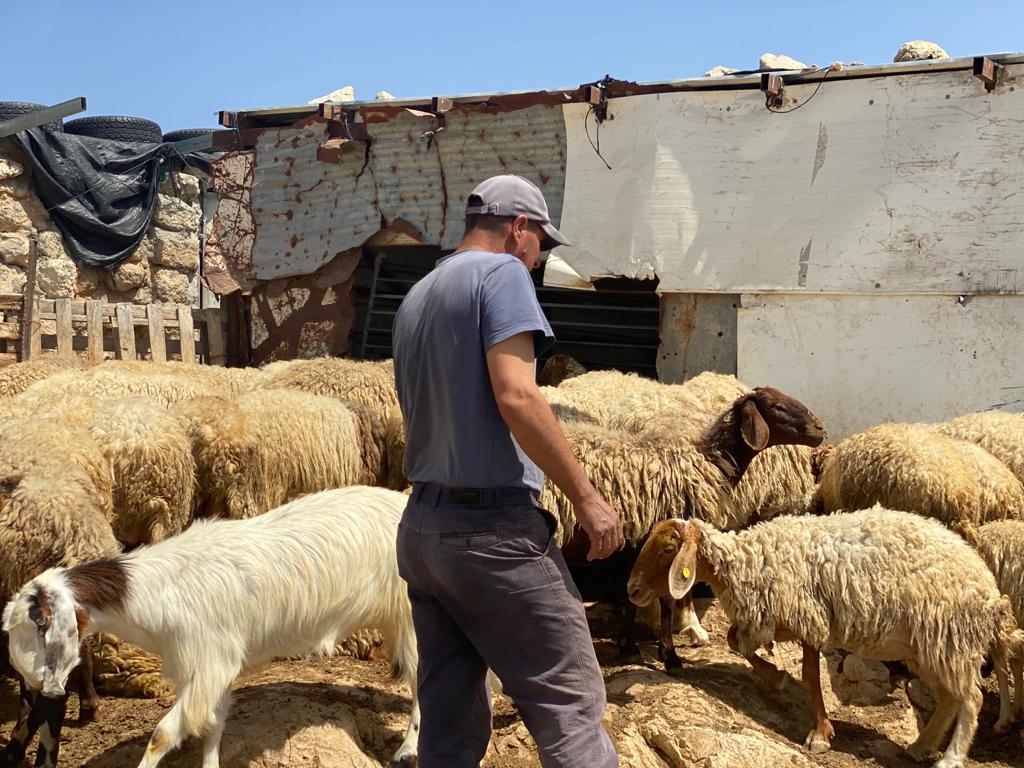
Bassem continued, “This morning, as we were crossing the hill to reach the watering hole for our sheep, five men and their dog attacked me, my brother, and our children — they pushed me and kicked and shoved our sheep. Our kids were terrified. We called the police, who only came and watched as the settlers pushed us and our herd back to our village. One of the settlers told me that if I came back to my land — our only land — he would shoot me. I do not know where we will take our sheep tomorrow.”
After visiting the brothers, local activist Basil al-Adraa, who joined me in Zanuta, pointed out the new caravans on the hill above. Earlier this month, Basil and I followed those caravans late at night as they made their way through the South Hebron Hills, until they turned off the road toward the Mount Hebron Regional Council, later to be illegally placed on the hill above Zanuta.
“With both formal land takeover and ongoing harassment by settlers and the army, traditional practices of sustainable land and resource utilization are being dismantled,” explained Basil. He pointed to Ein al-Beida as a prime example of this phenomenon.
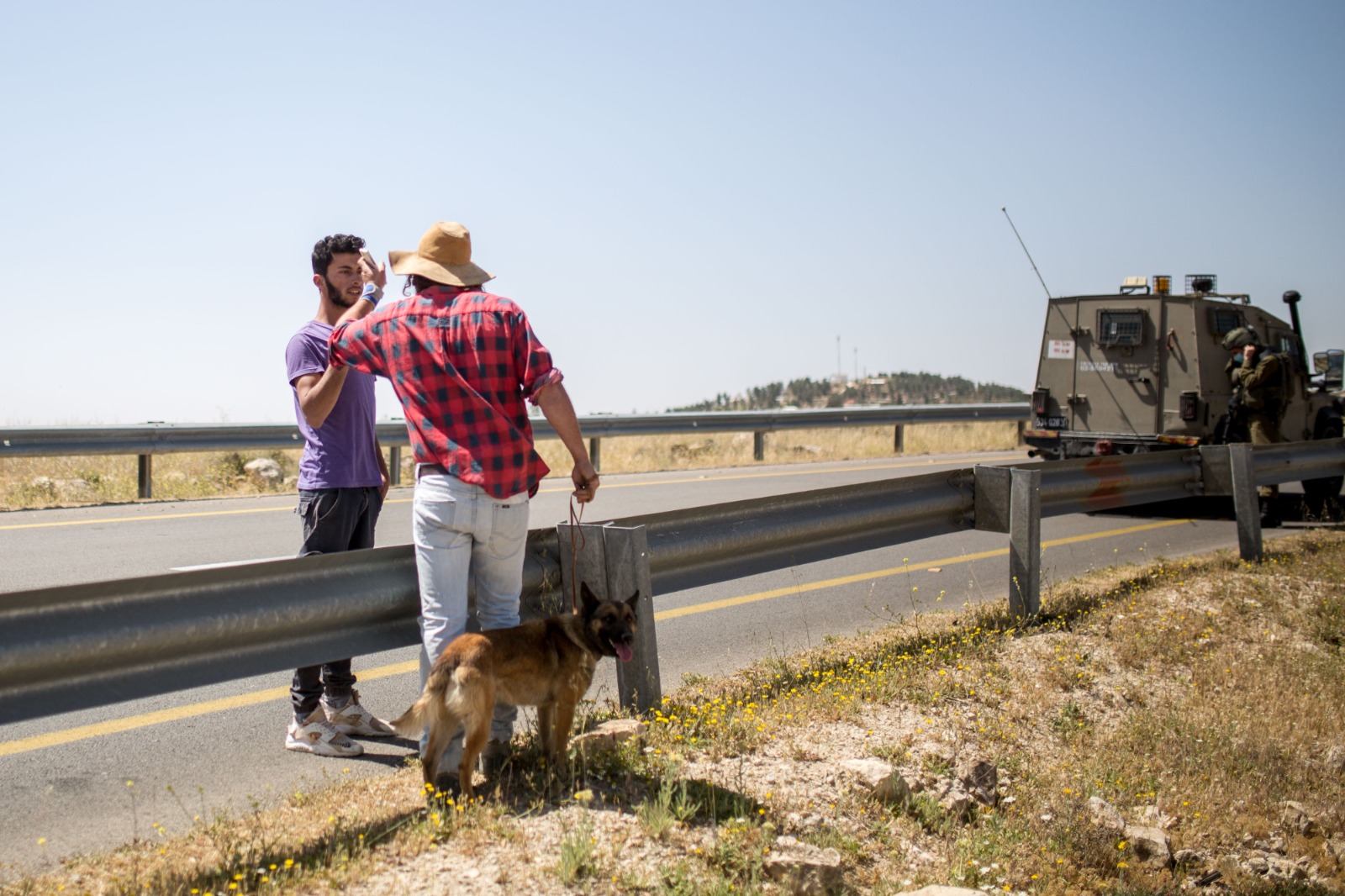
“For centuries, residents of the five villages surrounding Ein al-Beida have built their livelihoods around farming in the wadis [valleys] and shepherding in the hills,” he said. “Even though these areas are private Palestinian land, Israeli authorities do not recognize grazing as [land utilization] and declared most of the hilly areas as ‘state land.’”
Basil continued, “The state allocated parts of this land for settlement development — including to Tnuva for industrial dairy and chicken farms, as well as to settlers of Havat Ma’on for a sheep farm and the recent project in Ein al-Beida. With large bulldozers, the settlers are, again, shifting the landscape of Ein al-Beida, taking soil from the wadi and preparing the hills above for some sort of agricultural project.”
A cyclical reality
The plans for development in Ein al-Beida are still a mystery. According to Quamar Mishirqi-Assad, the legal project director of the land rights NGO Haqel, any development project of this scale is required to publish their plans publicly on formal government websites to allow for any objections.
The Israeli Civil Administration responded to Haqel’s inquiries into the project by stating that the developers have permission to utilize the land. However, Quamar noted that considering that — as far as we know — no plans have been published and that the master plans of the Carmel and Ma’on settlements do not include any development projects in Ein al-Beida, there are serious questions about the legality and transparency of this project.
Given that we do not know the full nature of these plans, we also do not know the environmental threat of this project. It is nonetheless clear that, at a minimum, and similar to other development projects in the area, the carving up of this hill will disrupt the flora and fauna critical to the biodiversity of the region. And when the movement of herds is restricted by military and settlement activity, shepherds are forced to overgraze land, which accelerates land degradation, and then must supplement their food with expensive and less-sustainable fodder.
The transformation of landscape I saw driving up the road past Ein al-Beida thus represents the grave, cyclical reality of the climate crisis in the West Bank: the occupation exacerbates the impacts of climate change, and climate change exacerbates the impacts of occupation.
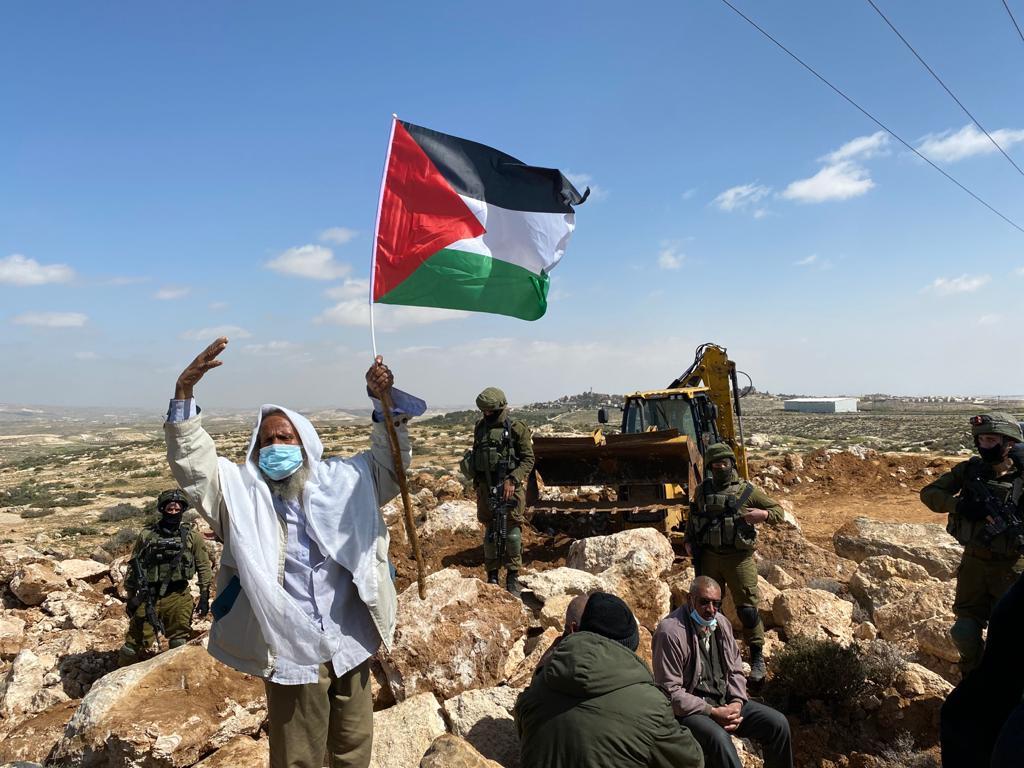
Amid this reality, the traditional lifestyle of Palestinian shepherds, who once roamed the land freely with their herds while sustainably utilizing land and water resources, is being systematically dismantled and replaced by pollutive, environmentally damaging projects. And as Basil explained, “These settlers have the economic means — with support of political and military authorities — to utilize significant land, water, and electricity resources as a political tool for land takeover.”
Shepherds — like all Palestinians living under occupation in Area C of the West Bank, which is under Israel’s full administrative and security control — lack the autonomy and resources to adapt and respond to these threats and to changing climate conditions. Under these circumstances, Palestinians will bear the brunt of the climate crisis while Israeli settlements continue to aggressively annex land, destroy the environment, and wreak havoc on the Palestinian residents of the area — all without consequence.

